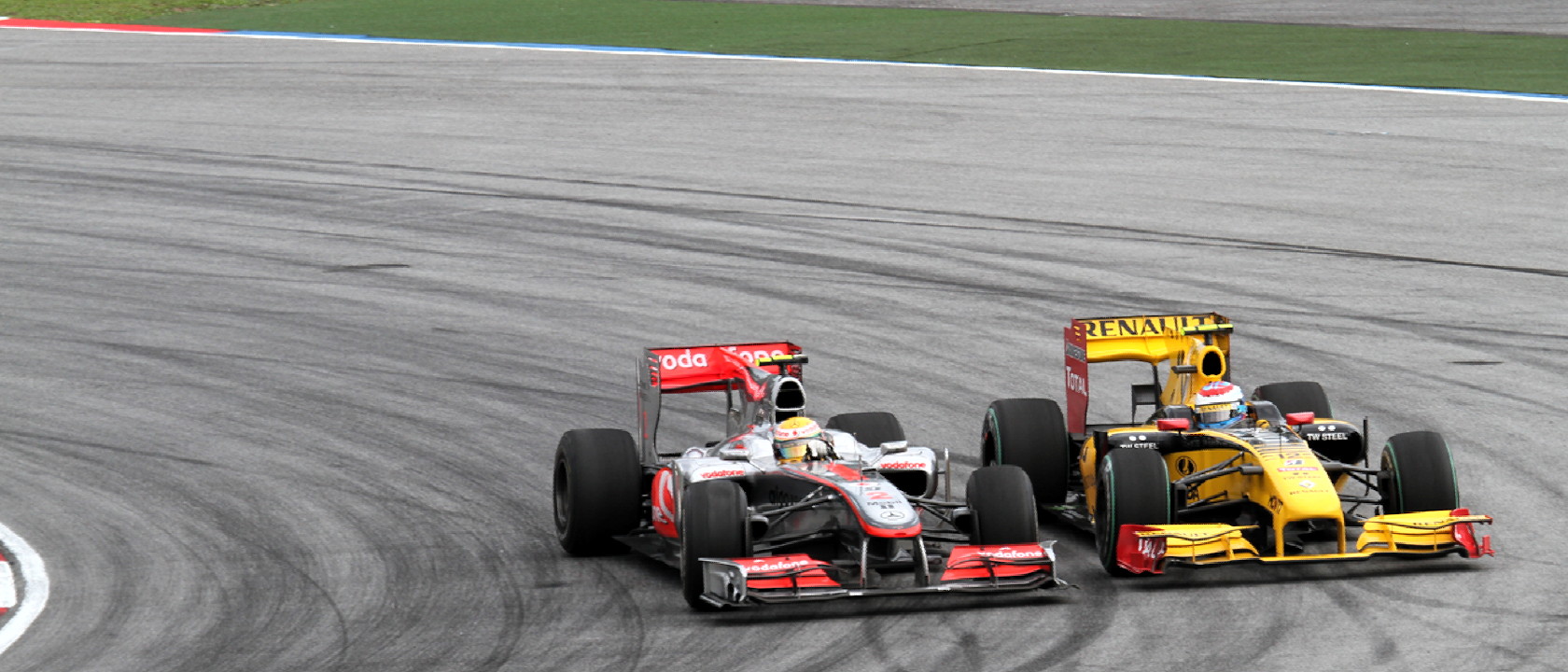The display of outright blocking by Lewis Hailton at the Malaysian GP was unsporting. That’s a term not much used these days, and it doesn’t translate well to the world of today’s F1.
Malaysia Hamilton overtakes Petrov by Markbel
Let’s look first at the rules. They’re in the FIA’s Sporting Regulations for Formula One.
20.3 More than one change of direction to defend a position is not permitted. Any driver moving back towards the racing line, having earlier defended his position off-line, should leave at least one car width between his own car and the edge of the track on the approach to the corner.
Now, you could ask why regulations are needed for defining racing moves. That’s a far larger question for another time. Today’s F1 sporting regulations essentially allow a driver to make one racing move before entering a corner. That is, you can move once (even to block), but more than one maneuver — weaving -—will draw a drive-through penalty as an “incident” involving “illegitimately preventing a legitimate overtaking maneuver by a driver” (Reg. 16.1).
Under that standard, what Hamilton did to Vitaly Petrov, the novice Russian driving for Renault, was a clear violation. More importantly, I think, it was unnecessary. There have been many World Championships decided by accidents, some intentional, with plenty of blocking too. (In 1997, for instance, Michael Schumacher shunted into eventual world champion Jacques Villeneuve in the final GP at Jerez. He kept his season points, but was stripped of 2nd place in the World Championship by the FIA, and subsequently apologized for a lack of sportsmanship.) There’s a difference between a decisive race for the title, though, and an early season, mid-pack scuffle for a non-podium position.
Watch the video. Hamilton weaves all over the track. Not two moves, not three moves, but four, to the edge of the tarmac, all to protect a perfectly racy pass earlier at the head of the straight. This man is a World Champion! The etiquette of racing — not the FIA rules — demands that a driver defend a position but with performance. Part of the art of racing is making the car wide without overtly blocking, like Aryton Senna did to Nigel Mansell in the closing laps of the 1992 Monaco Grand Prix . All that came from the episode, even after Hamilton’s pit-lane contretemps two weeks later with Vettel, in China, was a reprimand.
You could not exactly call this crime ‘hooning’, the charge with which the McLaren driver was hit by police for wheel-skidding like a boy racer on a public road in Melbourne three weeks ago. In fact, many people were of the opinion that Hamilton had committed no crime at all — beyond that of actually racing. But those who counted, his fellow drivers here in China, were pretty much unanimous in agreeing that he had acted improperly when he weaved down the home straight in Malaysia a fortnight ago.
The GP Drivers Association met and recommended to FIA’s race director Charlie Whiting that they wanted to see future miscreants given a drive-through penalty. And as Ruebens Barichello remarked, “It was Formula Ford stuff,” adding that if it had been him instead of Petrov he would have handed the 2008 world champion a “———-“. Now that I can agree with!


